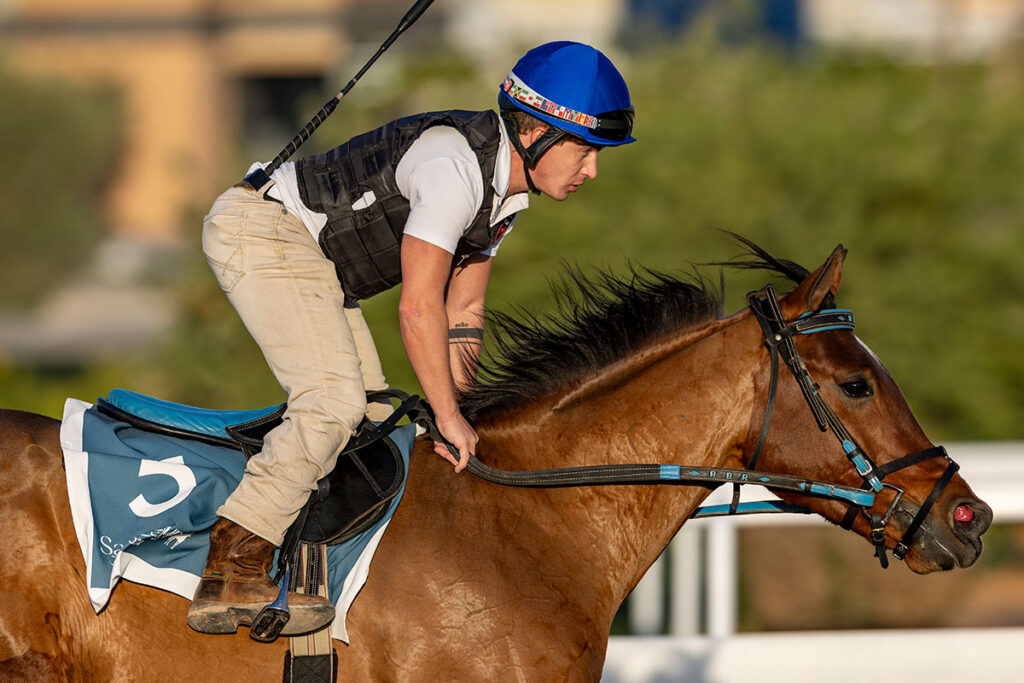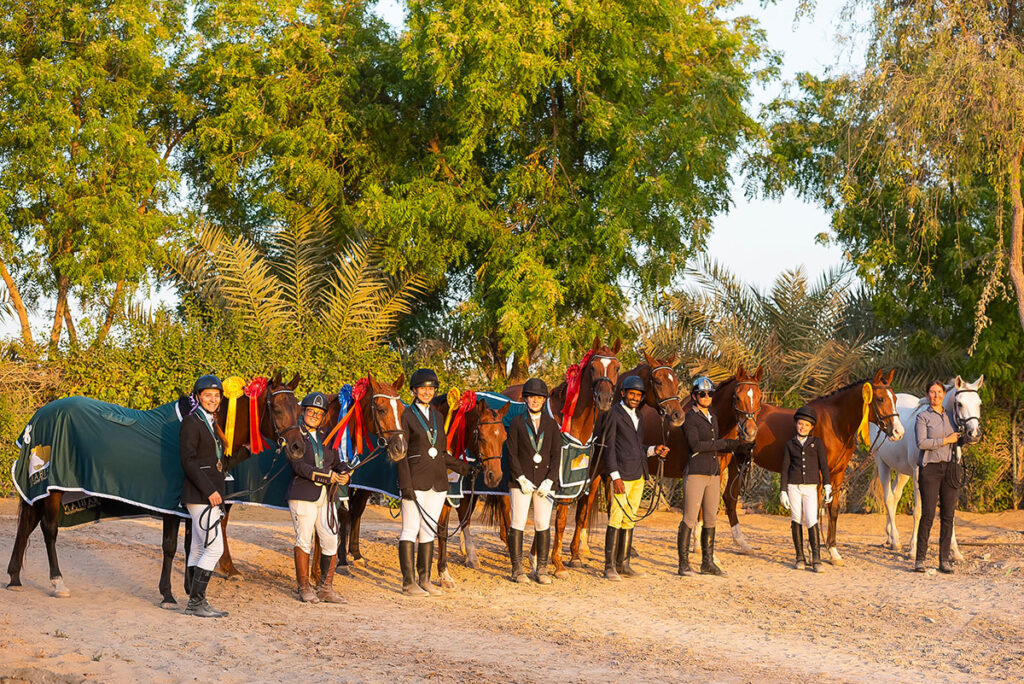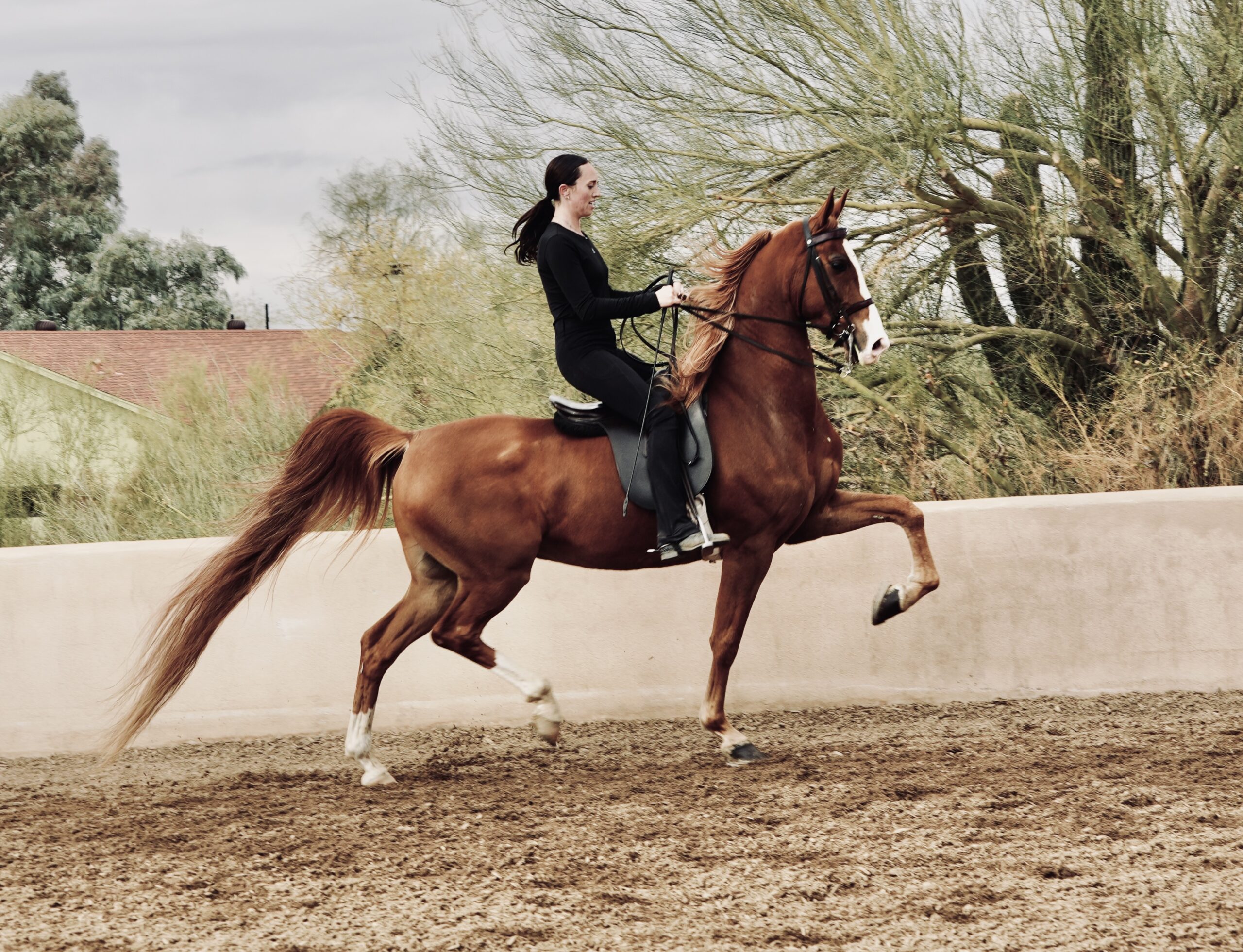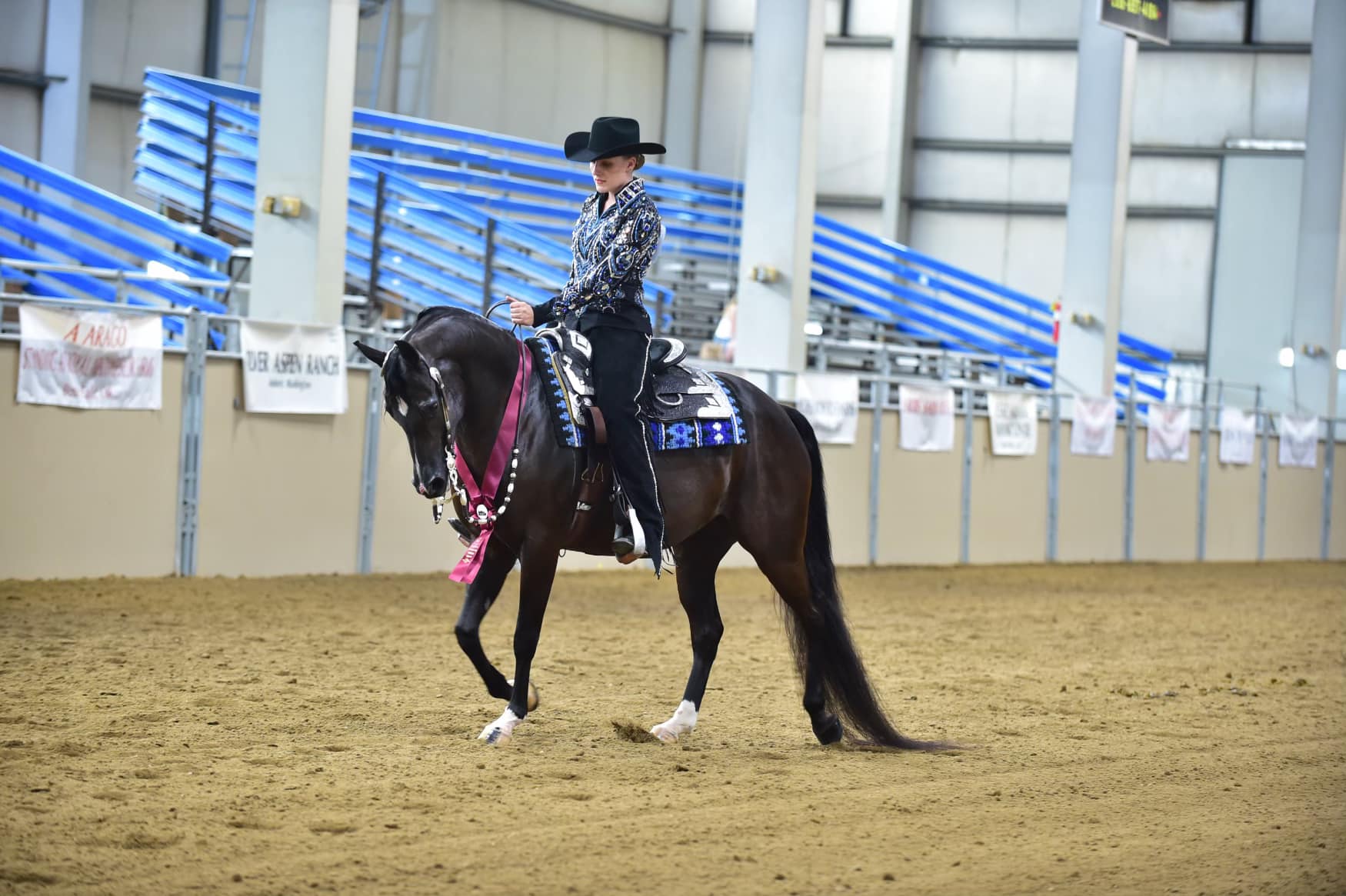Arabian horses race on turf at Sam Houston for the first time since 1997 in the Texas Six Shooter Stakes on March 9. Full-sisters RB Mary Lylah and RB Malexis (Al Mourtajez x Rich Kinkga) finish one-two and defeat older males horses.
By Jonathan Horowitz, Executive Director, Arabian Jockey Club
As featured in the Spring 2024 issue of Arabian Horse World
Arabian horse racing has reached new milestones in the United States and worldwide in 2024.
Over the past decade, there’s been a brighter spotlight for the breed at horse racing’s most prominent venues with opportunities to run in million-dollar-plus races. February 17, 2024, marked the first time in history that two seven-figure Arabian stakes races took place on the same day—HH The Amir Sword in Doha and HH The President Cup in Abu Dhabi.
Al Ghadeer won HH The Amir Sword and is the highest-rated Arabian in the world, with eight victories in a row, including six at the Group 1 level in France, England, and Qatar. RB Kingmaker won HH The President Cup and added his name to the list of recent American-bred horses, including First Classs, Paddys Day, RB Rich Lyke Me, and others, that have won at the highest level overseas.
Arabians represent the most versatile breed in flat racing—excelling over a range of distances and surfaces, and fillies and mares competing on equal footing with male horses. At Al Ain Racecourse in the UAE on March 22, the Al Ain Sprint took place over 1,000 meters (5/8 miles), and the very next race was the Final Leg of the Al Ain Marathon Series over 5,100 meters (3 3/16 miles).
In the United States, the phenomenal filly RB Mary Lylah defeated male horses and set track records in back-to-back races at Sam Houston Race Park while sprinting on dirt in the Darley Sprint and then going two turns on turf in the Texas Six Shooter Stakes in 2024.

Honey Proof (NF Proof x Sweet Honey AA) became the first horse to ship directly from America to run in the $2 million Obaiyah Arabian Classic at the Saudi Cup. Photo by Jockey Club of Saudi Arabia.
The 2024 Texas Six Shooter Stakes marked the first time Arabians raced on turf in America since 2019. With the increased diversity of race breeding lines in the United States, thanks to the enterprising vision of American breeders crossing domestic mares with international stallions, the Texas Arabian Breeders Association organized for Arabians to race on turf at Sam Houston for the first time since 1997.
The previous Arabian race on turf at Sam Houston, in 1997, was the Patrick Swayze—Lisa Niemi Cup, named for the couple that has left an indelible legacy in Hollywood and on the Arabian breed.
“Arabian racing is a very important thing to me,” Swayze said the day before when he demonstrated his horsemanship with his beloved stallion Tammen at Sam Houston. “Lisa and I are very new into it. We love the horses for who they are, and if a horse has the talent to race, they should get that opportunity. Racing to me is a heritage in this country and in the world that I think is very, very, very important to never lose. The further we get into this high technological society, the further we get away from our roots and the further we get away from that very special, powerful bond that can exist between a man and a horse or a man and a best.”

Jockey Teresa Salazar celebrates her first career victory aboard an Arabian racehorse as RB Mama Wingate (Baseq Al Khalediah x Ma’Ma’Ah) breaks her maiden at Sam Houston in Texas on March 15.
The Arabian Horse World’s Stud Book Research Volume 94 of 2022 foals showed that the racing sire Burning Sand is the second-most-bred-to stallion. Three of the top-ten breeders across the entire Arabian breed in the United States utilize racing lines—Garrett and Lisa Ford’s Altitude Arabians in Colorado at #2, Dianne Waldron’s RoseBrook Farm in Florida at #4, and Joe and Betty Gillis’ Allegro Arabians in Mississippi tied for #8.
The first Arabian race at an American track didn’t occur until 1959. So, racing breeding lines are still relatively new for the breed in America but are making a solid impact across various horse sports. The benefits of racing for the Arabian include athletic breeding, exposure to a variety of handlers, riders, and environments at the track, and the foundation of gaits they learn from racing. Many Arabian race trainers and owners also take an active approach to retraining and rehoming their racehorses for their next careers.

Elise Jeanne (far right) is a race trainer in the UAE that retrains her racing Arabians to be sport horses and leads a team of riders representing MH Stable. Photo by Elizabeth Glanville.
Seeing what Arabian racehorses do off the track has become the most rewarding part of my roles as a broadcaster and Executive Director of the Arabian Jockey Club. That’s the most special part to me of the new Racing Section at the Al-Marah Arabian Horse Galleries at the Kentucky Horse Park. It shows the racing Arabian’s impact on the breed as a whole—both on and off the track. We all share a love of the Arabian horse, and at the Arabian Jockey Club, we’re honored to be the “Voice of the Arabian Athlete.”






